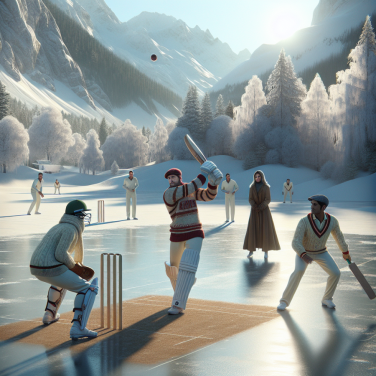Mastering the Field: The Skills and Strategies of High-Octane Polocrosse Competition
As players master their horsemanship and take to the field, understanding the nuanced skills and strategies of high-octane polocrosse is crucial for those seeking to excel in this dynamic sport. Polocrosse demands a synthesis of equestrian finesse, athletic prowess, and tactical intelligence. Players must harmoniously blend these elements to emerge victorious in the fast-paced matches that define the thrilling world of polocrosse.
To begin, horsemanship is the cornerstone of any polocrosse competitor's skillset. Riders must be adept at controlling their mount with precision and confidence, using minimal physical cues to guide them through quick turns, sudden stops, and rapid sprints. The bond between horse and rider significantly impacts performance, as a well-trained, responsive horse can be the difference-maker in a tight game.
Stick-handling is another critical skill, where players maneuver the polocrosse racquet with dexterity to catch, carry, and throw the ball. A player's ability to manipulate the stick with speed and accuracy, often with just one hand, while simultaneously managing their horse, showcases the level of coordination required for the sport. Furthermore, the ability to switch the racquet swiftly between hands without losing control of the horse or ball exemplifies advanced skill mastery.
Positioning and teamwork form the strategic backbone of high-level polocrosse. Players must constantly be aware of their position on the field relative to their teammates and opponents. Effective communication and understanding each player's role, strengths, and weaknesses are vital for orchestrating plays and outmaneuvering the opposition. A well-executed strategy often involves creating space for leading passes, blocking opponents to protect the goal, or forming a cohesive unit to regain control of the ball.
Defensive skills are as important as offensive prowess. Defensive riders must use their positions and racquets to block shots on goal and disrupt the flow of the opposing team's offense. Being able to anticipate the opponent's moves and intercept the ball can swiftly turn defense into a quick counterattack, catching the other team off guard.
Physical fitness and mental toughness are non-negotiable in polocrosse. The sport demands not just horsepower but also staying power, with players needing to maintain high levels of endurance, strength, and agility throughout the match. Mental acuity and focus are equally essential, as split-second decisions can often determine the outcome of a game.
Read also:
Understanding the Legal Parameters for Street-Legal Golf Carts
Unleashing Excitement: The Dynamic Fusion of Polo and Lacrosse on Horseback
Polocrosse, a sport that marries the traditions and skills of polo and lacrosse, serves as a remarkable showcase of horseback dexterity, team strategy, and high-energy competition. This unique equestrian discipline, which has been gaining popularity globally, thrives on the synergy between horse and rider, as they maneuver through the field with both finesse and strength.
The Origins and Evolution of Polocrosse
Tracing its roots back to England in the 1930s, polocrosse was invented as a way to improve the riding skills of young polo players. Since then, it has evolved into a fully-fledged sport in its own right, with a fervent following across countries like Australia, South Africa, the UK, and the US. The sport combines elements from polo, such as the horses and riding style, with lacrosse's netted stick and ball-handling techniques to create an engaging and challenging game.
The Game Mechanics
Polocrosse is played on a grass field, often smaller than a traditional polo field, making the play more immediate and enthralling for spectators. Teams comprise six players, split into two sections of three, who take turns playing offense and defense. Each player assumes a specific role akin to attackers, midfielders, or defenders, providing a structure reminiscent of other team sports.
The Equipment and Attire
The key tool for any polocrosse player is the 'racquet’, a stick with a loose net at the end, which is used to carry, catch, and throw the ball. Players and horses are also equipped with protective gear to prevent injury from the high-speed play. Horses wear protective boots and bandages, while players don helmets, face guards, and arm and leg guards.
A Horse-Rider Bond Like No Other
The spotlight in polocrosse shines equally on the rider and the horse. A well-trained polocrosse horse is responsive, agile, and possesses a calm disposition to handle the high-intensity game environment. Riders develop a deep bond with their mounts, marked by trust and nuanced communication. This partnership is crucial, as split-second decisions and rapid changes in direction or pace are commonplace.
Training and Tactics
Skills training for polocrosse encompasses equestrianism, stick work, ball control, and tactical gameplay. Riders must be adept at controlling their horses with one hand while wielding the racquet with the other.




